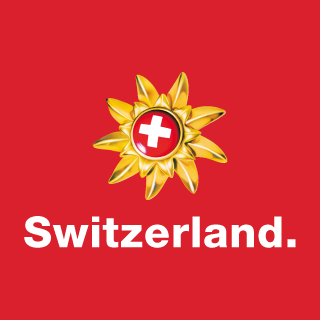The rice field in the Maggia delta Markus Giger showcases a location where risotto rice grows and thrives.
Intro
In Ticino, autumn is harvest time. Alongside grapes and chestnuts, rice is also harvested. Rice is grown in Ticino? That’s right! Close to Ascona, where the Maggia river flows into Lago Maggiore. Markus Giger is responsible for agriculture at the enterprise Terreni alla Maggia. Growing rice is his pet project.
Autumn on Lago Maggiore
The sun-kissed region around Ascona-Locarno is a real treasure trove in autumn. Even when the days become shorter, temperatures around Lago Maggiore remain mild and the sun shines. Mediterranean flair combines with brightly coloured leaves, and local specialities create gastronomic delights.
From the promenade to the rice field
Its position right by the lake, its palm-trees and its typical brightly painted houses lend the former fishing village of Ascona a very special kind of flair. A passion for beauty and joie de vivre are at the centre of life here. When you’re strolling along the lakeside promenade, it’s almost impossible to believe that there is a farm nearby. A 25-minute walk reveals peace and a breath-taking natural landscape as far as the eye can see.
A green oasis in Ascona
In the delta surrounding Lago Maggiore, a completely new world is revealed to visitors. Across a total of 150 hectares, fields, vines and flower meadows flow into one another. They belong to the Terreni alla Maggia farm, along with the 5-star hotel Castello del Sole. The family enterprise embodies the concept of sustainability. The motto “From the field to the plate” is realised on a daily basis here. For his dishes at the gourmet restaurant Locanda Barbarossa, chef Mattias Roock selects the very best ingredients from the garden. The chef, who has received 18 GaultMillau points and one Michelin star, uses these to create unparalleled gastronomic temptations.
Markus Giger, Head of Agriculture
Markus has worked as an arable farmer at Terreni alla Maggia for over 40 years. Originally from German-speaking Switzerland, his heart is devoted entirely to Ticino. His work is his passion, and respectful interaction with the environment comes first and foremost.
Necessity is the mother of invention
In the mid-1980s, prices for maize, grain and soya collapsed. Profits were too low and the business was facing ruin. The farm manager at the time starting looking for alternatives. What might work? Risotto rice was chosen. It plays a key role on menus in the region. It was clear that sales would go well. But to ensure that the tropical plant could thrive in Ticino, it was extremely important to choose the right plant and the right method of cultivation.
Ready for harvesting in just 150 days
hich type of rice has the right ripening time to thrive in Ticino? Loto, a relatively young variety, was chosen. These particular rice grains are ready for harvesting in just 150 days. Sowing takes place at the end of April, with harvesting at the start of October. In the months in between, Ticino enjoys lots of sunshine and warm temperatures. Loto is also very robust and excellently suited to risotto.
Can rice be cultivated in dry fields?
The rice fields of Terreni alla Maggia differ from the typical rice terraces that are seen in Asia. The difference lies in the method of cultivation: in Ascona, the rice is cultivated using a dry process. The sandy ground and uneven fields are unable to guarantee even flooding, and in spring the water would be too cold and would need to be warmed up. So the dry process saves both water and energy. Most importantly, no methane is released. Methane is a greenhouse gas and is created in flooded fields, due to low oxygen levels. Compared with other types and cultivation methods, the rice grown in Ticino is more environmentally friendly and saves water and energy.
The perils of dry cultivation
Despite the advantages, the dry cultivation of rice also has its hazards. There is more pressure from weeds, and fighting them is a more costly process. The switch to organic cultivation means that chemical weed-killers are dispensed with. Ecological cultivation is not only a centuries-old tradition but also shows respect for an unspoilt natural environment. “For me, natural agriculture is most important,” says Markus. “And dry cultivation has ensured the unmistakeable flavour of our risotto for over 20 years.” For Markus, there is no better feeling than having satisfied customers. “Our customers love Loto rice and come back time and again to buy their supplies.”
The combine harvester arrives
A great deal of experience is needed to set the right time for harvesting. The grains are usually ready towards the end of September or the start of October. The stalks are then somewhat over a metre high, and the heavy golden panicles begin to bow down. But height and colour are not what determines the right time for harvesting; moisture is most important. The rice grains should have a moisture content of exactly 25 per cent. How does Markus calculate the right harvesting time? “I have a rapid moisture meter, but I mainly trust my years of experience,” he says with a laugh. He takes a stalk in his hand, pulls off the grains and husks a grain of rice How does it look and feel? That’s all that counts.
Depending on the weather, a decision on when to combine is made from one day to the next. Once the time is right, everything happens very quickly. Row by row, the rice stalks are harvested, the grains end up in the belly of the machine, and the dusty straw is left behind on the field. From the combine, the harvested crop is transferred directly into a trailer and taken to the drying facility. There, the harvested grain is dried at around 45 degrees in a convection oven for up to 20 hours.
The next step is hulling. This involves the removal of the outer membrane, the technical term for which is the “hull”, through friction. Brown rice is the result of this process. Further processing occurs away from Ascona. Further husking, polishing and buffing takes place in specialised mills in Taverne in the canton of Ticino or Brunnen in the canton of Schwyz. The resulting white rice is then packaged and sold under the label “Riso Nostrano”. In a good summer, around 400 to 450 tonnes of rice grains are harvested at Terreni alla Maggia. However, over 40 per cent of this is lost during drying and husking.
From the field to the plate
Once the harvest is safely gathered in, only one thing remains for Markus and his team of harvesters: a big plate of risotto. Nothing tastes better. Incidentally, there is no such thing as a secret recipe for the best risotto. Every family has its own recipe. Anyone wanting to take the holiday vibe home with them can try chef Mattias Roock’s star risotto.
The fertile land in the Maggia delta
Terreni alla Maggia has used the fertile land in the Maggia delta for agriculture for more than 90 years. The area cultivated covers around 150 hectares and spans the municipalities of Ascona, Locarno and Gordola. Maize, durum wheat and grapevines all grow and thrive here, alongside rice. The farm’s products can be bought in the farm shop: various speciality pastas, polenta, spices and oil, as well as red and white wines. Here, Ticino is available to take away.
Discover the agricultural enterprise
During a tour, guests can discover the agricultural enterprise Terreni alla Maggia up close and authentically. The green fields and picturesque vineyards allow visitors to escape from everyday life as the tour guide reveals exciting facts about the enterprise. The crowning moment is the opportunity to taste Terreni alla Maggia’s own wines, accompanied by a tasty morsel.


